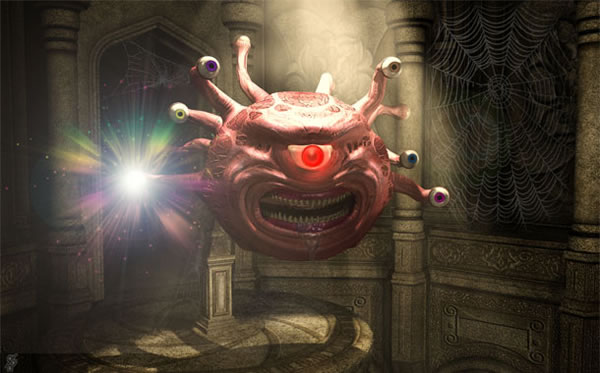
There are two hypothesis: the first is that the gaze-copying behavior is because we're naturally drawn to people's eyes, whereas the second is that we're drawn to faces. But how could Alan distinguish the two? After all, our eyes are on our faces and there's nothing he could do about it.
Enter his 12-year-old son Julian Levy, who came up with a brilliant solution: just use monsters from Dungeons & Dragons!
Ed Yong of Not Exactly Rocket Science explains:
One evening, Kingstone was explaining these two hypotheses to Julian over dinner. “A colleague had said that dissociating the two ideas — eyes vs. centre of head — would be impossible because the eyes of humans are in the centre of the head,” Kingstone said. “I told Julian that when people say something is impossible, they sometimes tell you more about themselves than anything.”The result is a paper lovingly titled "Monsters are people too" - You can read all about it here, or let Ed summarize the findings for you over at his blog: here
Julian agreed. He thought it would be easy to discriminate between the two ideas: just use the Monster Manual. This book will be delightfully familiar to a certain brand of geek. It’s the Bible of fictional beasties that accompanied the popular dice-rolling role-playing game Dungeons and Dragons. Regularly updated, it bursts with great visuals and bizarrely detailed accounts of unnatural history. It has differently colored dragons, undead, beholders… I think one edition had a were-badger. Parts of this blog are essentially a non-fictional version of the Monster Manual.
Levy knew that the Manual contained many nightmarish monsters whose eyes are not on their faces. If people still looked at the eyes of these creatures, it would answer the question. Kingstone loved the idea. He persuaded Julian’s teacher to give him some time away from school to test his ideas for himself, and she agreed.

No comments:
Post a Comment